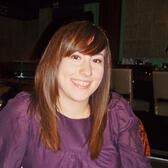JWA's Greatest Hits: Eating Jewish: Teiglach (Ashkenazic Honey Dough Balls)
Honey is an integral element on the Rosh Hashanah table and in thinking about what to write about for my posts about foods to serve during the upcoming New Year celebrations, I knew I had to include a dish in which the main ingredient consisted of this golden sweetener.
Although honey cake is a classic Ashkenazic dessert that has become synonymous with this holiday for Jews who are part of this community, I wanted to try my hand at something I hadn’t made before. So I turned to the numerous cookbooks that line my bookshelves and found this recipe for teiglach. The recipe jumped off the page at me as soon as I saw it, because in my books anything that is fried or baked and subsequently covered in honey sounds delicious.
Despite the fact that I hadn’t made these before, they are traditional Rosh Hashanah fare in the Ashkenazi community with origins that date back to the times of the Romans who, according to Gil Marks, made strips of fried dough in honey called vermiculos. Italian Jews adopted the custom of making vermiculos but this dish disappeared from their repertoire in the middle ages. It was in the twelfth century that Franco-German Rabbis mentioned eating a dish of fried or baked strips of dough covered in honey called vermesel or verimlish, at the beginning of the Sabbath meal. Despite the fact that its name went through changes, being called gremsel and then chremsel in Eastern Europe, it is to this dish of vermesel that teiglach owes its beginnings. Although most popular on Rosh Hashanah when it is served in order to help usher in a sweet new year, teiglach is also eaten on joyous occasions such as weddings and Brit Milahs.
This is a dish that does require some time to make but don’t be intimidated by the length of the recipe because the steps are easy enough. It simply requires making the dough, which simply consists of a few ingredients, shaping it into balls and baking them until they are lightly browned. While they are cooling, the mixture of honey, sugar and ginger is cooked on the stovetop. Once this is done, the balls of dough are dropped into the honey mixture and cooked until they have absorbed and been coated in the mixture. The resulting dessert is one of small honey soaked balls that are just the right amount of sweet with a hint of spicy ginger that look irresistible when piled high on a plate.
This traditional dessert, whose beautiful appearance is matched by its equally mouthwatering taste, will look elegant and modern at the center of any Rosh Hashanah table.
Teiglach (Ashkenazic Honey Dough Balls)
From Gil Marks’ The World of Jewish Cooking
Dough
3 large eggs, lightly beaten
½ teaspoon baking powder
¼ teaspoon salt
About 1 ¾ cups all-purpose flour
Syrup
1 cup honey
½ cup sugar
½ teaspoon ground ginger
1 cup coarsely chopped walnuts, blanched almonds, or hazelnuts (optional)
1/3 to ½ cup minced candied fruit (optional)
-
Preheat the oven to 350 degrees. Grease a large baking sheet or two small ones. Oil a large plate or second baking sheet.
-
To make the dough: Combine the eggs, baking powder, and salt. Gradually stir in enough flour to make a soft, workable dough. Place on a lightly floured surface and, using floured hands, knead until smooth, 2 to 3 minutes.
-
Cut the dough into 1/3-inch thick strips and roll into ropes. Cut into 1/3-inch pieces and roll each piece into a ball. (The dough will still be a little sticky at this point but simply roll the dough in a little bit of flour. It is okay that the dough pieces are not smooth, as this will allow the honey to seep inside.)
-
Arrange the dough pieces in a single layer on the oiled baking sheet. Bake, until very lightly browned, 10 to 15 minutes. Let cool.
-
To make the syrup: Stir the honey, sugar, and ginger in a large saucepan over low heat until the sugar dissolves. Stop stirring, increase the heat to medium-high, and bring to a boil. Reduce the heat to low and simmer for 10 minutes.
-
Add the dough pieces and cook, stirring frequently with a wooden spoon, for 10 minutes. Add the nuts and fruit if desired, and cook until the syrup is a deep brown and the dough pieces sound hollow when tapped, about 10 additional minutes.
-
Pour the teiglach along with the syrup onto the oiled plate or baking sheet and let stand until cool enough to handle.
-
Using wet hands, shape into 2 to 3 inch mounds or shape into 1 large mound. Let cool completely. Store in an airtight container at room temperature.








My mother used to make teiglach for Rosh Hashanah.
My Italian aunt made the same thing for Christmas. Does anyone know what the Italian version is called?
I’ve made this recipe a few times. This year I added the rind of 1/2 of an orange & 1/8 tsp. Lemon juice which I saw in another recipe. ( no fresh lemons on hand so used Real Lemon concentrate. The teiglach was great and loved by my friends. But, I have never gotten this recipe to mound, even after being wrapped tightly in aluminum foil. This Rosh Hashana the dough balls had deflated & resembled platelets. What am I doing wrong?
Thank you so much for the teiglach recipe, Katherine Romanow! Just like my dear mother used to make for Rosh Hashana.
Haven't had this in so many years. Sort of remembered it as "soup nuts in honey syrup, stored & delivered in a coffee can". Didn't even know there was a real recipe. I will definitely try to make this.
My husband's grandmother would make teiglach every year. I loved them so am looking forward to trying this recipe. One question - she always made them with a walnut piece in the middle of the ball but none in the syrup. Is this a usual way of making them?
I am doing this for a class project and am excite to try it out this is my heritege
my grandma also made these frequently, but I never liked honey
My Gramma Rosie made these every year. Can't wait to try this recipe and re live my childhood.
I haven't had these since I was a child and on this eve of Yom Kippur had to investigate to see if I could find a recipe. It seems as though this one has just the right ingredients. My guess is that by baking the dough first it becomes crisp. I can remember biting into a crisp-like round dough all covered with rich honey and nuts....Yum! I must make them.
As a child I recall my grandmother and later my mom making this with lightly toasted matza ferfel. I have been searching for this recipe for years. Thank you
I'd like to know how many teighlach this reciepe makes
My grandmother, who lived with us for around 10 years, in Bayside, Queens, made teiglach every Chanukkah for many years, and my Mother after her, for probably almost as many years. The ingredients in the Teiglach recipe I got from my Mom are almost identical to the one above by Katherine, but our preparation process is quite different: We always roll the dough out into 1/4 or 1/3 " ropes (rather than strips). These are chopped to about 5 - 6 " long / ea .... and are then tied into loose knots. I lay these dough knots out carefully on a broad, floured platter, while tying more of them, and bringing a large pot of the honey and ginger to a boil. Once most of the dough is tied into knots, I begin dropping them, 1 at a time, into the biggest bubble of the boiling honey syrup. Once all of the remaining dough knots have been tied and dropped into the boiling the dough knots, allow them to boil for around 20 minutes, until golden brown. Once done, can add around 1/2 C water for each 2 C's of honey, to thin down the syrup. Then cool in a casserole dish, and once cooled, cover and store, or serve. The Teiglachs will become more crunchy once they are completely cooled, and will continue getting more crunchy as the days pass, which is how I like them best. However, you may prefer them in the more tender phase just after cooling.
I happen to love Gulab Jamun! I've never made them myself but they are somewhat similar to teiglach. Except Gulab Jamun is fried rather than baked and remains soft after having been dipped in the sugar syrup, while teiglach becomes harder.
Great blog!! This recipe appears similar to that of the East Indian sweet, Gulab Jamin. I think that Gulab Jamin has cardamon and rose water. Are you familiar with it?